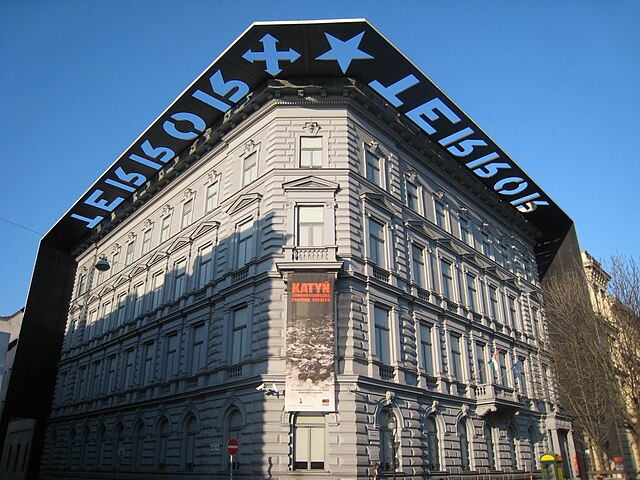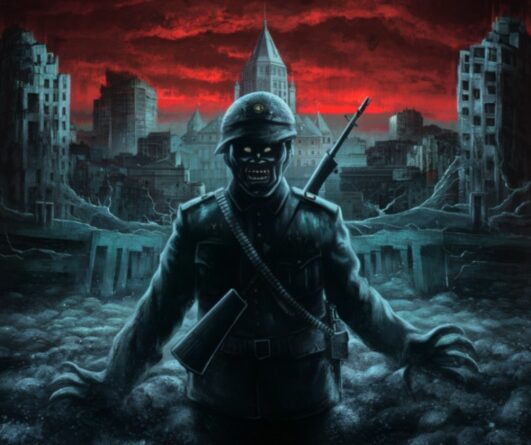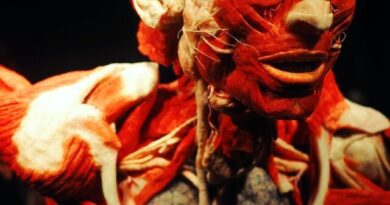The House Of Terror Budapest: A History Lesson About Horrors
Budapest is one of the most fascinating cities full of attractions in Europe, and the writer of these lines – who just recently spent a delightful week there with his family – can testify to that. But the capital of Hungary also has a vast and traumatic past, part of which many want to forget, but we have to remember. While many will mention Hungary’s part in the Second World War in the history of the city, some other negative points require mention, mainly during the Nazi and communist rule in the city. The Terror Museum in Budapest, also known as the “House of Horror,” is a clear example.
The House of Terror in Budapest is not a classic horror attraction, contrary to what you might expect from its name (don’t miss The Nightmare in Budapest!). It is probably not a must-see attraction for anyone who comes to Budapest. Still, for history lovers and its dark side, visiting the museum can be very enriching.
What Is The House Of Terror Budapest?
The Museum of Terror in Budapest (House of Terror Mezeum, or Terror Háza Múzeum) was opened in 2002 with a clear goal: to commemorate the dark periods in the history of Budapest and the atrocities that took place in this city, including the building where the museum itself is located. The museum was established in memory of the victims of terrorism in the city during the periods of Nazi and communist rule in the 20th century, people who were imprisoned, interrogated, tortured, and murdered, often brutally, mainly due to the suspicion that they opposed these murderous regimes.
The museum is located in a building from 1880 that stands out for its neo-renaissance style. The choice of this particular structure is anything but random. In 1937, after the Jewish-Hungarian painter Isaac Perlmutter lived here for several decades, the Hungarian National Socialist Party decided to rent rooms in the building. A few years later, in the early 1940s, the Fascist Arrow Cross Party took control of the building. The building, which became its official headquarters, was named the “Trust House.”
In the decades since then, the building has taken on several other roles, including black spots in Budapest’s history. After the occupation of Hungary by Nazi Germany in 1944, the place became a prison, where many hundreds of people who were considered “opponents of the regime” were also tortured and murdered. The Soviet occupation changed a little of the character of the detainees but not much of the atrocities that took place here. Afterward, the Hungarian secret police operated here.
The next stops in the museum’s history were more pleasant when commercial companies began to operate there. In the early 2000s, the Foundation for the Study of the History and Society of Central and Eastern Europe bought the building, to turn it into a triumphant testimony to the atrocities that took place in Hungary during these dark regimes and to commemorate their multiple victims. The building was renovated, inside and out, with the black color standing out in the outer shell. A tank stands out in the interior of the museum.

What Does The House Of Terror In Budapest Offers?
In the Terror Museum of Budapest, you will find various exhibits related to the darker times in Hungary’s history. In the museum’s permanent exhibition, you will find exhibits related to Hungary’s relationship with the countries expressing the Nazi and Communist regimes – Germany and the Soviet Union, of course – but also organizations that operated in Hungary, such as the Arrow Cross party we mentioned earlier or the secret police, the AVH.
In this context, it is possible to point out criticisms that the House of Terror Museum Budapest has received for allegedly presenting the Hungarians as the only victims of these regimes. The presentation of the Hungarians as those who were “caught up in the situation” ignores the fact that Hungary was not just a victim of these regimes and, for many years, took an active part in them. Note that the museum hardly focuses on Hungary’s role in World War II, but Budapest has a separate museum dedicated to that.
The Terror Museum in Budapest has three floors, where you will find historical exhibits, photos, screening rooms with detailed testimonies, and more. Among the stations encountered during the tour of the museum are the “double occupation” room; Divorce events and involuntary transfers of people; collective persecutions and persecutions of defined groups, such as peasants; And also changing exhibitions, such as the exhibition “It Takes a Great Ideal To Produce A Great Crime” by the painter and artist Sam Hevdtoy, or an exhibition dedicated to the first woman who took part in the Parliament of Hungary.
Although The Terror Museum Budapest has certain interactive elements, the emphasis is not on advanced technology or games for all ages. There is a lot of information, most in Hungarian and some in English, some written on the walls and some in the very busy information sheets visitors receive. There is also the option of getting an audio guide in different languages for an additional fee, which can provide the necessary knowledge to understand what happened here and in Hungary. The voice guide is also clumsy and tedious, according to a large part of the House of Terror Budapest reviews.
It is also worth mentioning the music which appears at the museum’s entrance and in other rooms. It was composed by Akos Kovacs, the lead singer, and producer of a Hungarian synth-pop band called Bonanza Banzai. The soundtrack mainly includes an orchestra of string instruments, digital mixes, and adapted sound effects.

The Basement Of Terror Museum Budapest
As far as horror fans are concerned, it may be that the basement, where you go down by elevator, is the more intriguing. The basement of House of Terror Museum Budapest is a reasonably accurate reconstruction, at a high level of detail, of what took place here in the 1940s and 1950s. You will be able to see the rooms where the prisoners were imprisoned, and in most cases, they were tortured by the members of the secret police and other elements of the regimes to make them confess their guilt, incriminate others, and so on.
Unlike torture museums that are their main essence (like the Prague Torture Museum we wrote about) or scary attractions that recreate dark times through scenery, effects, actors, and scares (like the dungeon of Berlin, Amsterdam, or London), the emphasis here is not on tools and methods of torture The cruelty. You can see some tools they used for such horrible cases, such as the gallows, but you won’t be able to learn from the exhibits about all the horrors this place has witnessed.
Should You Visit the House of Terror Museum Budapest?
If you look at the museum’s offerings and the reviews of those who visit it, you can tell that visiting here is far from enjoyable. It’s also not one of Budapest’s apparent must-sees. Nevertheless, many would argue that it is powerful, exciting, and essential.
A period of about an hour and a half is reasonable, while history buffs can spend 3 to 4 hours here. On the other hand, we have already heard of people who entered here for a few minutes and hurried to leave, whether the museum differed from what they expected or whether its contents needed to be more manageable.
Important information for a visit to the Terror Museum in Budapest
How Do You Get To The Museum?
The Museum of Terror in Budapest is located at Andrássy út 60. It is a reasonable walking distance (about 1.5-2 km) from some of the city’s most prominent points of interest, such as St. Stephen’s Basilica, Liberty Square, and the Ferris Wheel. If you arrive by public transport, you can do it by The metro (line M1 to Vörösmarty utca station) or, in our opinion, the more recommended way, tram lines 4 or 6, to Oktogon station. In Budapest, taxi prices are cheap, and you can use them to visit the museum.
House Of Terror Budapest Opening Hours
As of the time of writing this article, the House of Horrors in Budapest is open every day of the week except Monday between 10:00 a.m. and 6:00 p.m. The ticket office closes at 17:30.
Because the opening hours may change throughout the year, and there are also special times (mainly holidays) when the museum is closed, we recommend that you find out in advance what the exact hours are on the date of your visit to the city through its official website and, of course, the ticket booking websites.
House Of Terror Budapest Tickets, Tours, And More
There are several ways to explore the Budapest Terror Museum. You will find different types of cards and other extensions that can expand the information you will receive here.
The main options for visiting Budapest’s House of Terror are:
Standard Entrance Ticket
The House of Terror Budapest tickets must be bought at the museum ticket office itself. As of 2024, House of Terror Budapest entrance fee is 4,000 forints for a full-price ticket or 2,000 forints for discounted tickets for children and young people aged 6-25, pensioners, families, and more.
Guided tours
The museum offers guided tours with professional guides who tell the shocking stories behind the various displays. The tours are in different languages, including English, Hungarian, German, and French. An issue you should consider is that tours only go out if there are at least ten participants (the maximum number is 30), and it is necessary to coordinate the tour with the museum staff in advance.
General tours or on a relevant topic, of which the museum is part of their route (sometimes, only from the outside)
Audio Guides
For a small fee, you can hire a personal audio guide who will accompany you to the house of horror and provide the necessary information. The guide is available in different languages.
Educational program
The museum offers a comprehensive program for students, including workshops, age-adjusted tours, and unique learning materials. Naturally, it is less relevant for tourists visiting Budapest.
Arriving At The Terror Haza Budapest? Here are some essential tips:
- It’s hard to understand what’s going on here without written or audio information
- This is not a “classic” horror attraction unless you take into account the fact that reality is sometimes scarier and more cruel than any horror movie
- As far as we know, taking pictures inside the museum is forbidden. Except for the tank in the entrance plaza
- From the House of Terror Budepest reviews, it appears that there is a lack of seating inside the museum rooms
Visiting The Museum? Here are other attractions in Budapest:
Some of the links on this site are affiliate links. That means if you purchase through them, we might earn a small commission. But don’t worry... it won’t cost you extra, and it probably won’t summon anything...
So if you’re thinking of buying something… don’t be afraid to click! 🔪👁️




